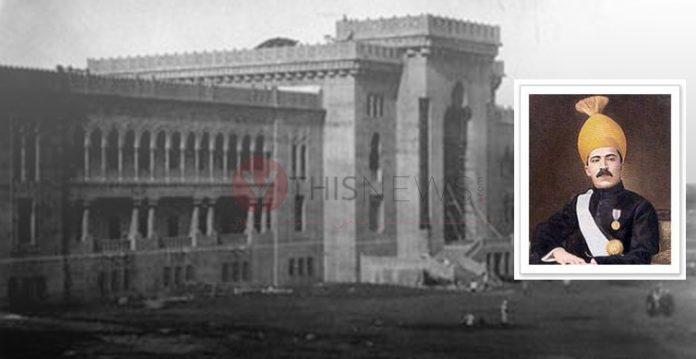On 26th April 1917 more than a century ago with a ‘Faraman’ (decree) from The Seventh Nizam of Hyderabad, Osman Ali Khan started the journey of India’s one of the topmost universities known today as the Osmania University or OU. Osmania University was the first university to use a vernacular language as its medium of instruction, an idea appreciated by scholars like Rabindranath Tagore too. It was Sir Akbar Hydari, the then Home Secretary to the State Government and also the secretary of education in Nizam’s government who emphasized the need to establish a University in Hyderabad to the Nizam with ‘Urdu’ as the medium of instruction with an aim to universalize the language and make it of a more secular usage. Historians like Kavita Datla sees the establishment of OU as a reverberation of the Indian Nationalist movement in north India and believes that the leading figures from Aligarh in Nizam’s government also played a major role in its establishment.
The foundation stone
After the ‘Faraman’ was issued the education department started the formulation of the curriculum with the help of several other committees. G Arun Kumar of the History department at University College of Arts and Social Sciences states that“While the medium of instruction was Urdu, the Nizam government made it mandatory to have English as a course”. Belgian architect Ernest Jasper, some of whose finest works include an ode to luxury and the Grand Hotel at Heliopolisoutside Cairo in Egypt was appointed to design OU. The emphasis of the royalty on the ‘perfect location’ of the university can be well understood from the 28 pages long paper titled “Osmania University Site and Layout” submitted by Patrick Geddes (who was assigned the task to search for a suitable location for the future Osmania University) to the Nizam. After the selection of the perfect place and with the designs of Jasper for the university in place, the Nizam of Hyderabad laid the foundation of OU on July 5, 1934,at Adikmet.
Why Urdu was chosen as the medium of instruction at OU
Kavita Datla in her book“The language of secular Islam” states that the policymakers of OU wanted Urdu to be ‘able to convey universal values to an Indian public’, like English, and to be ‘more versatile and more like English’. Another reason behind choosing Urdu was that the makers of OU want to emphasize on the vernacular languages the medium of instruction and Urdu was widely spoken in the state and was also the official language of the state since the 1880s.
To ensure that all the books are in accordance with the medium of instruction the Nizam government established a Bureau of Translation. From 1917 to 1947 the Translation Bureau, under the able leadership of Abdul Haq translated 426 books into Urdu. Seeing such untiring efforts anyone from the 20thcenturymightponder on the need for translation of texts in a language which isn’t much popular now, to understand this one needs to understand that people of those times believed that Urdu can become the national language as it has an Indic blend and was therefore suited to be India’s national language but this proposal was later rejected by INC.







